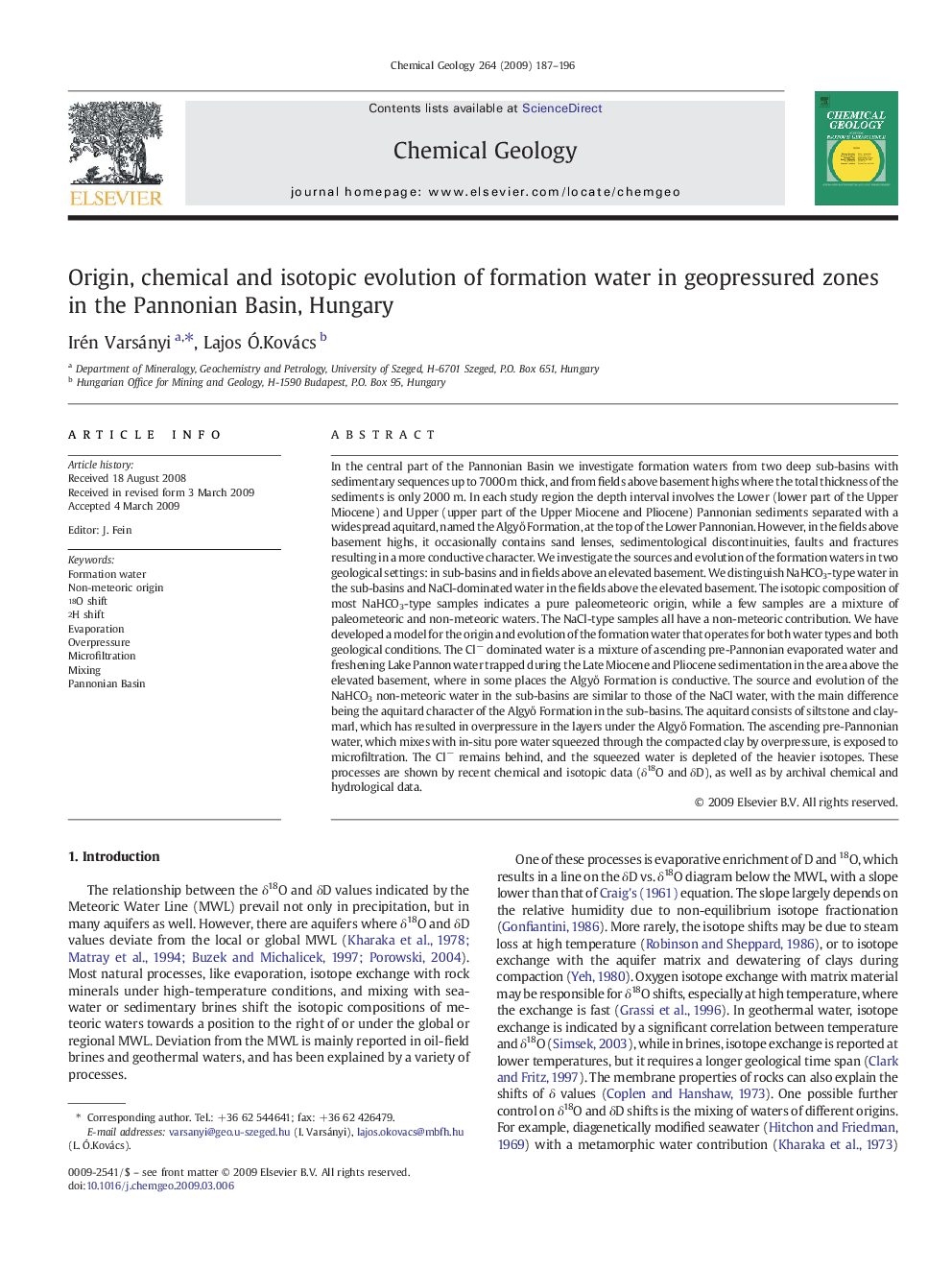| Article ID | Journal | Published Year | Pages | File Type |
|---|---|---|---|---|
| 4700309 | Chemical Geology | 2009 | 10 Pages |
In the central part of the Pannonian Basin we investigate formation waters from two deep sub-basins with sedimentary sequences up to 7000 m thick, and from fields above basement highs where the total thickness of the sediments is only 2000 m. In each study region the depth interval involves the Lower (lower part of the Upper Miocene) and Upper (upper part of the Upper Miocene and Pliocene) Pannonian sediments separated with a widespread aquitard, named the Algyő Formation, at the top of the Lower Pannonian. However, in the fields above basement highs, it occasionally contains sand lenses, sedimentological discontinuities, faults and fractures resulting in a more conductive character. We investigate the sources and evolution of the formation waters in two geological settings: in sub-basins and in fields above an elevated basement. We distinguish NaHCO3-type water in the sub-basins and NaCl-dominated water in the fields above the elevated basement. The isotopic composition of most NaHCO3-type samples indicates a pure paleometeoric origin, while a few samples are a mixture of paleometeoric and non-meteoric waters. The NaCl-type samples all have a non-meteoric contribution. We have developed a model for the origin and evolution of the formation water that operates for both water types and both geological conditions. The Cl− dominated water is a mixture of ascending pre-Pannonian evaporated water and freshening Lake Pannon water trapped during the Late Miocene and Pliocene sedimentation in the area above the elevated basement, where in some places the Algyő Formation is conductive. The source and evolution of the NaHCO3 non-meteoric water in the sub-basins are similar to those of the NaCl water, with the main difference being the aquitard character of the Algyő Formation in the sub-basins. The aquitard consists of siltstone and clay-marl, which has resulted in overpressure in the layers under the Algyő Formation. The ascending pre-Pannonian water, which mixes with in-situ pore water squeezed through the compacted clay by overpressure, is exposed to microfiltration. The Cl− remains behind, and the squeezed water is depleted of the heavier isotopes. These processes are shown by recent chemical and isotopic data (δ18O and δD), as well as by archival chemical and hydrological data.
